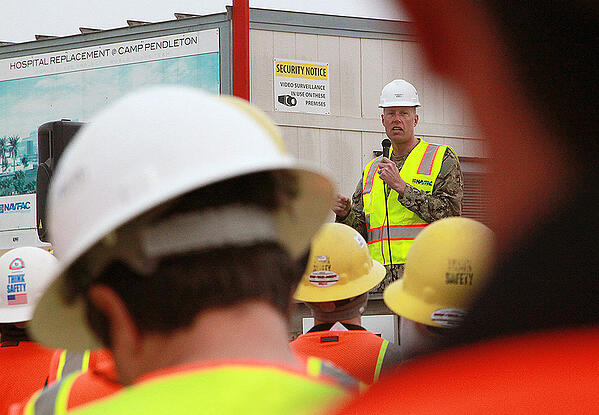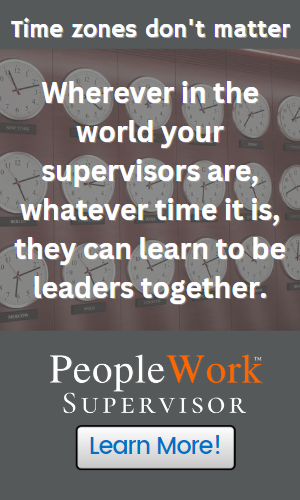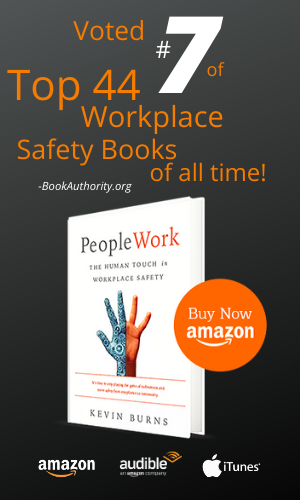Safety is not a complacency problem, it's a marketing problem.
Never before in history have we had better processes and procedures in safety. Never before in history have we had more qualified safety professionals working with companies in every industry. And yet, we are still hurting people.

Truthfully, we don’t need more rules in safety. What we need is more of our employees to buy-in to what we are trying to do in safety. That isn’t a process problem, or a rules problem, or even a complacency problem. It’s a marketing problem.
People buy things (and buy-in to things) when that thing makes their life better in some way. They buy-in when there is a clear win for them.
So, what is the win for your people in safety?
We need to communicate a vision and a plan for safety. Something that makes your people want to be involved, to participate. That’s so much more than achieving bare-minimum compliance. We need to give our employees something to rally around, something to buy-in to other than “because it’s the law.”
Acceptable Versus Unacceptable
Have you determined what is acceptable and what is unacceptable with your team? If you have not identified and articulated what is unacceptable, then you will be faced with deciding every time. And if this decision varies from the last decision, you send a message of inconsistency. That’s bad marketing.
 Seth Godin, the marketing guru recently wrote, “If we accept behavior that’s unacceptable, we’re compromising on something that we thought was too important to compromise on. And that’s how we end up with the unacceptable becoming commonplace.”
Seth Godin, the marketing guru recently wrote, “If we accept behavior that’s unacceptable, we’re compromising on something that we thought was too important to compromise on. And that’s how we end up with the unacceptable becoming commonplace.”
Safety is not a complacency issue. It’s an inconsistency issue and inconsistency is bad marketing. It undermines the values, standards, and culture of your safety program.
If a supervisor is not clear and forthright on what is acceptable and what is unacceptable, the frontline crew will walk on eggshells in their work. They will be hesitant to make a mistake because they are not clear on what the standard is. People who approach their work with uncertainty make mistakes.
When you are clear on what is acceptable, you give certainty to your people. Certainty drives confidence. Confidence and certainty eliminate complacency.
Set your standards. Decide what is acceptable and what is unacceptable. That very act makes it easier for your frontline employees and supervisors to guide their work accordingly.
The Role of The Supervisor in Employee Buy-in to Safety
Employees do what supervisors do. Period. The greatest influence on a team is the immediate supervisor. Remember, employees don’t leave because of a company policy or because of the senior management team. An employee leaves a bad relationship with their immediate boss.
 Since nearly 80% of a supervisor’s work is in communicating, coaching, mentoring, and motivating, supervisors had better have those skills. Employees are depending on their supervisor to be able to do it reasonably well.
Since nearly 80% of a supervisor’s work is in communicating, coaching, mentoring, and motivating, supervisors had better have those skills. Employees are depending on their supervisor to be able to do it reasonably well.
A supervisor needs to intervene regularly. Not to micromanage, but to improve performance. To coach. In the same way that an athlete’s coach would speak up and offer in-the-moment advice and instruction, supervisors need to do the same.
As a supervisor, if you are going to call yours a team, you need to be the coach of that team. You need to actively coach them, communicate with them, motivate them and mentor them to help them grow. Especially when the work gets hard.
Give them skills instruction. Make them feel like their performance matters - because it does. Help them depend on their fellow team members like championship sports teams do. Let each one of your team members step up and shine with that thing they do best.
A team that cares about the other members of the team will care about the safety of the team.
Employees Don’t Care About What You Care About
When employees do something that makes no sense or is self-defeating, it’s not because they’re stupid. It’s more likely that they don’t believe what you believe, like sharing your values in safety. It’s not that they don’t believe in safety. They just may not see safety the way you do.
 If you asked 10 people to shout out their favorite breed a dog, you would likely get 10 different answers. But none of them would be wrong since the exercise asked for them to shout out a breed of dog. Now, ask 10 people to come up with an image of safety, and you will get 10 different answers again. And likely none of those images would be wrong, simply different than the next.
If you asked 10 people to shout out their favorite breed a dog, you would likely get 10 different answers. But none of them would be wrong since the exercise asked for them to shout out a breed of dog. Now, ask 10 people to come up with an image of safety, and you will get 10 different answers again. And likely none of those images would be wrong, simply different than the next.
You cannot just use the word safety and expect your people to know exactly what that means to you. You must help them see what you see. You need to articulate your vision and your plan in a way that they see it too.
Before you ask them to buy-in to safety, you should probably make sure that they understand exactly what you mean.
There is No Marketing Without Communication
Most organizations admit that they need a lot of help in communicating with each other. No wonder we can’t get universal buy-in to safety. We are communicating it wrong.
Safety isn’t a rules problem, or process problem, or even a complacency problem. It’s a marketing problem. We haven’t been able to get buy-in to safety because we expect our people to see what we see without helping them with a specific level of clarity. That’s bad marketing that rarely results in buy-in.
And doing more of the same isn’t going to get you there.

Are you communicating the benefits of employee participation in the safety program? If you would like to find out how to improve your effectiveness in communications and coaching, click the button below.
Kevin Burns is the President/CEO of KevBurns Learning. Kevin works with smart, caring companies to energize safety culture, build teamwork, and get employee buy-in.
In 2020, BookAuthority.org named PeopleWork #7 of The Top 44 Workplace Safety Books of All Time. Buy yourself a copy of PeopleWork: The Human Touch in Workplace Safety and give another as a gift to a colleague.
Subscribe to Kevin’s Blog.



